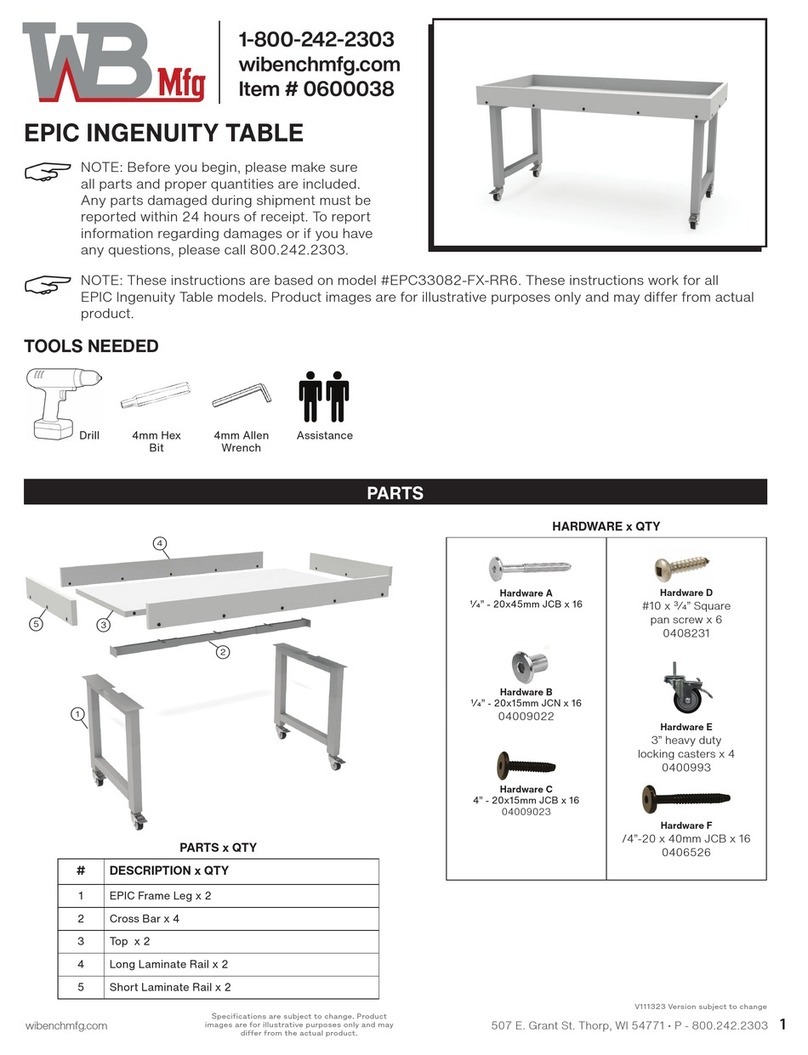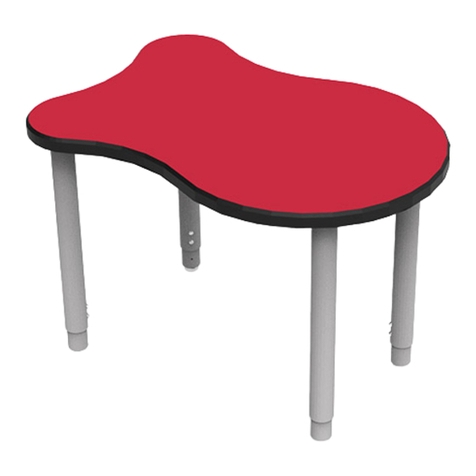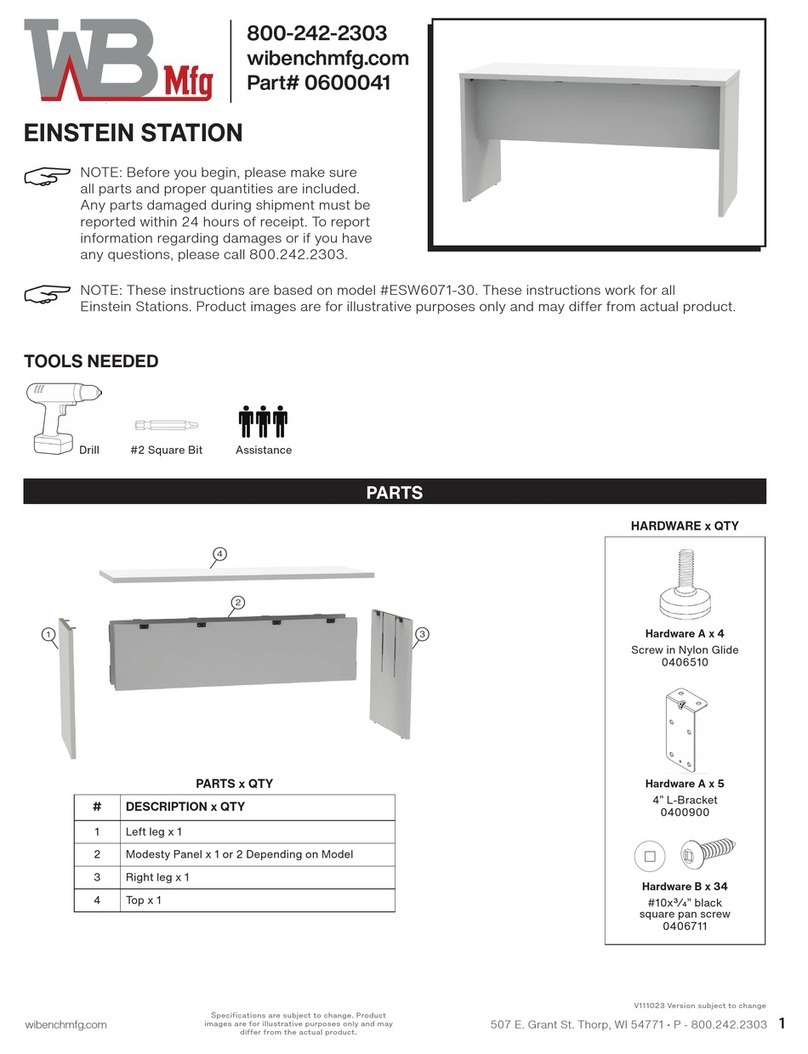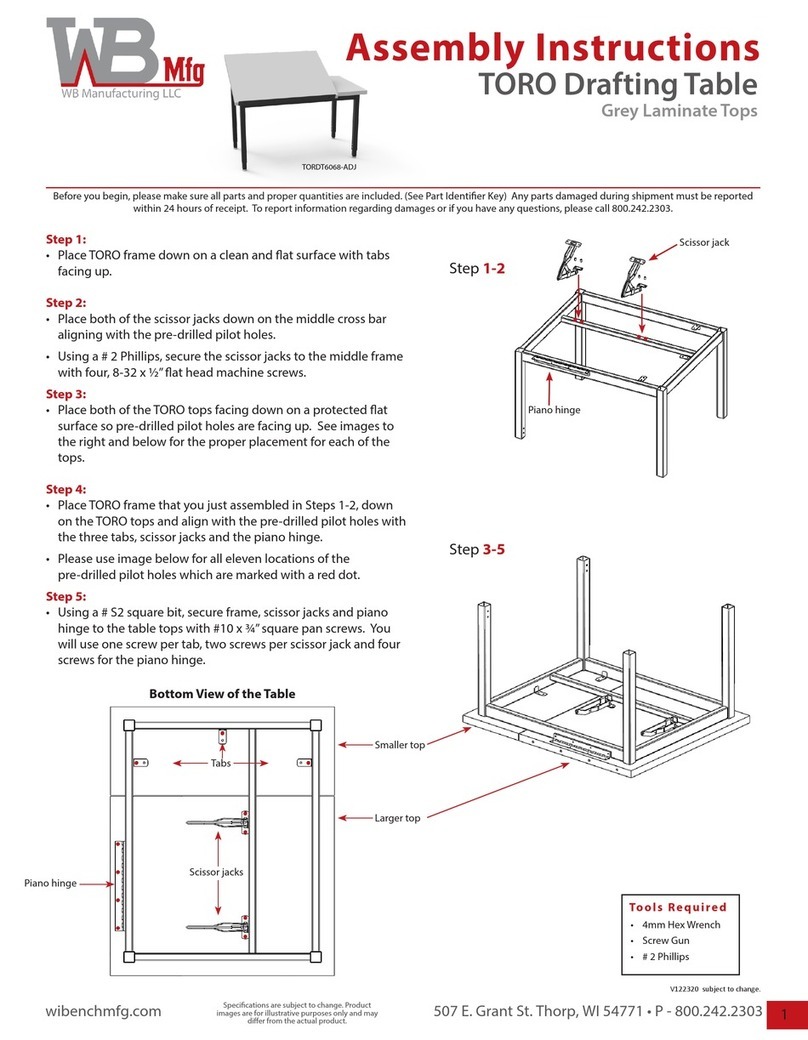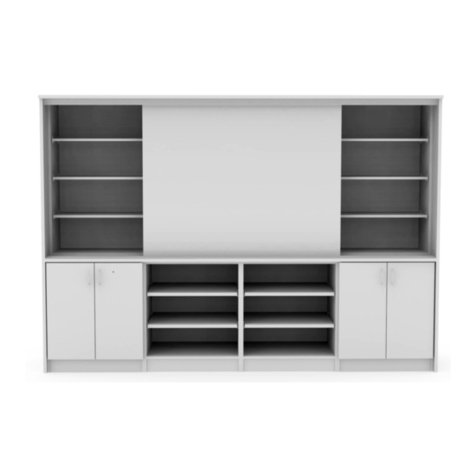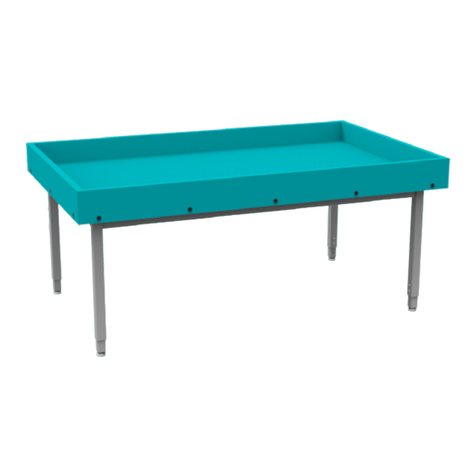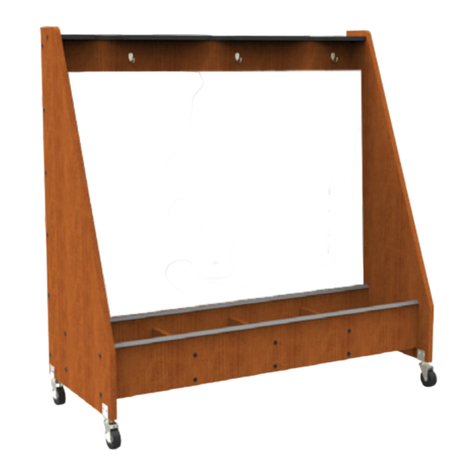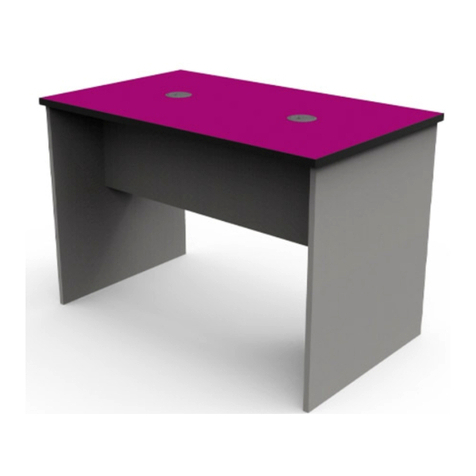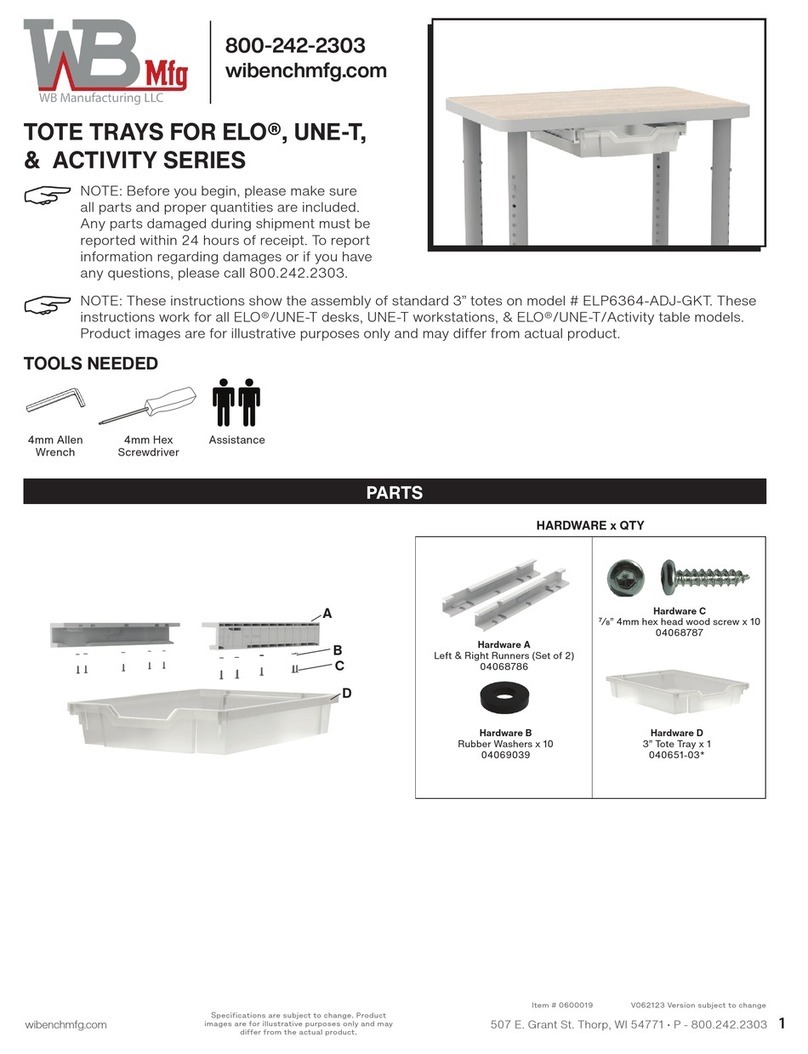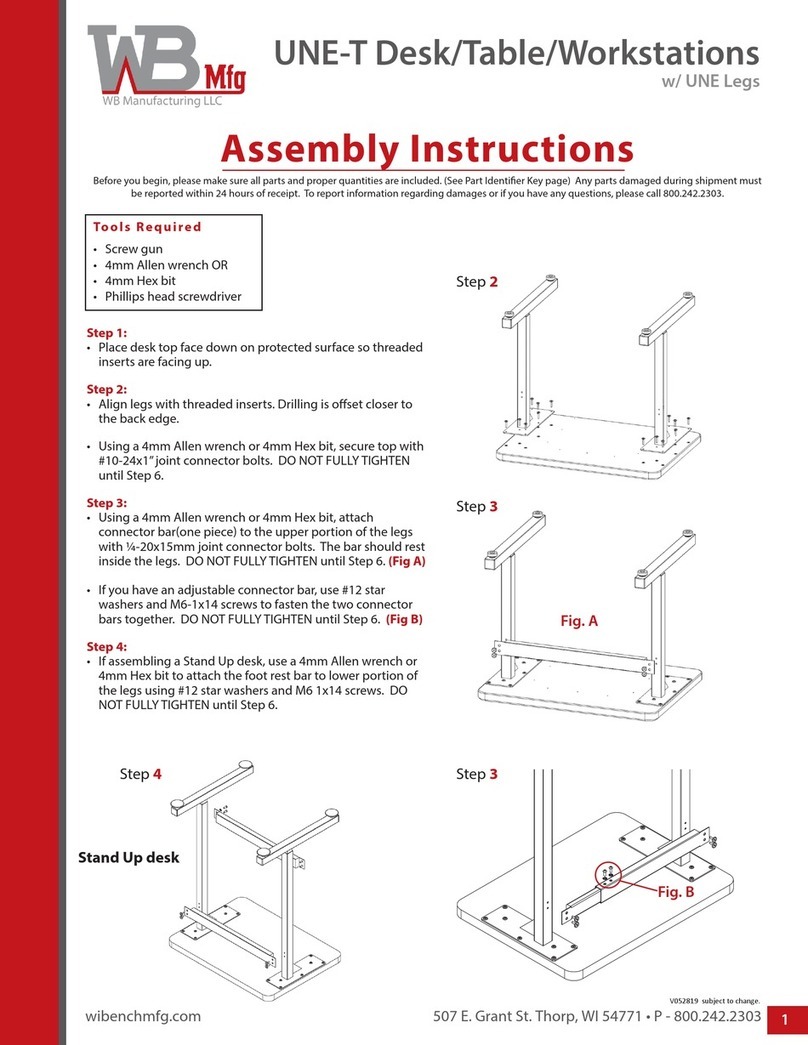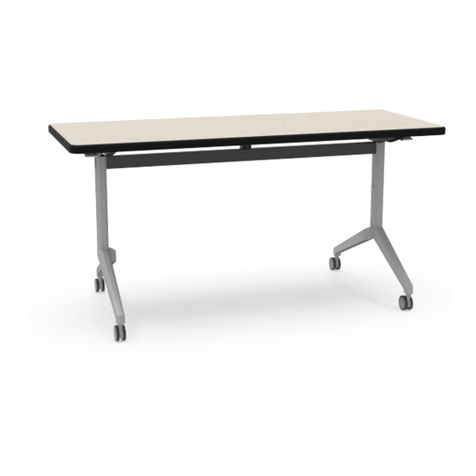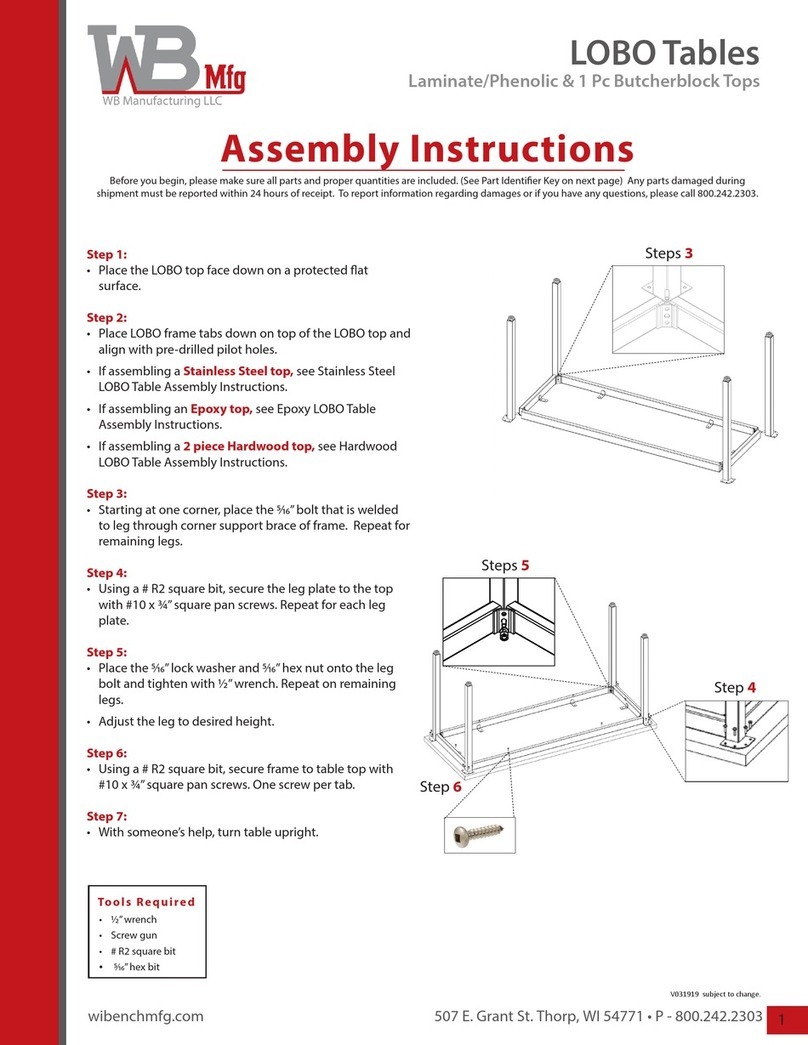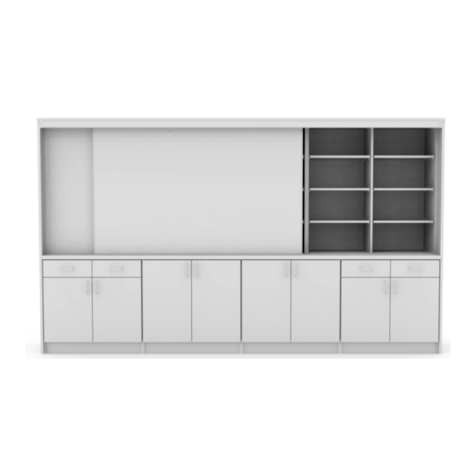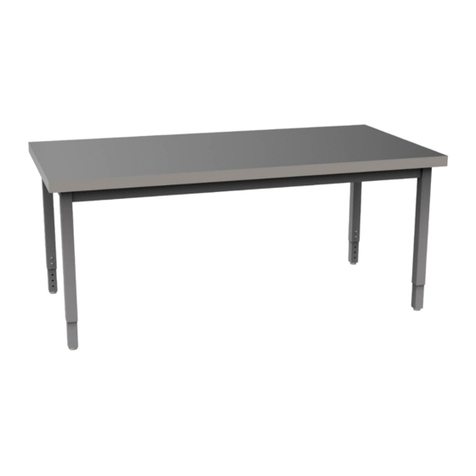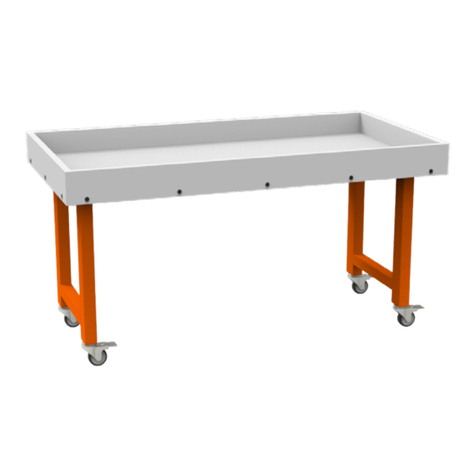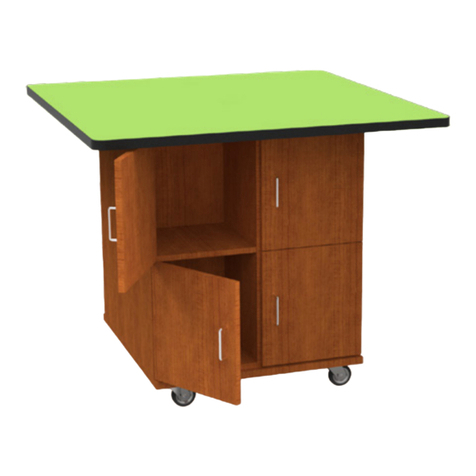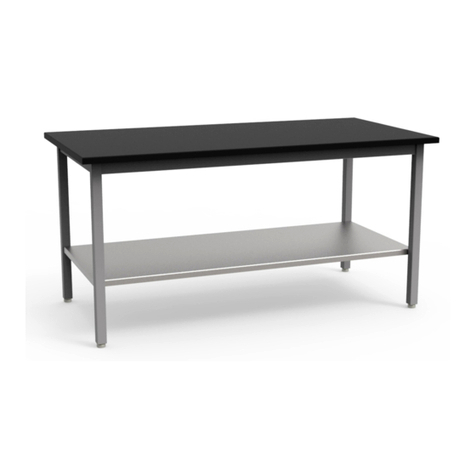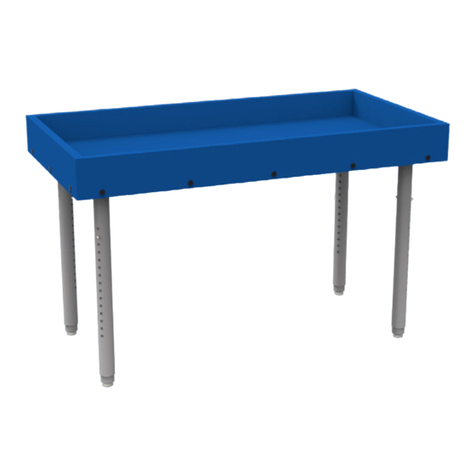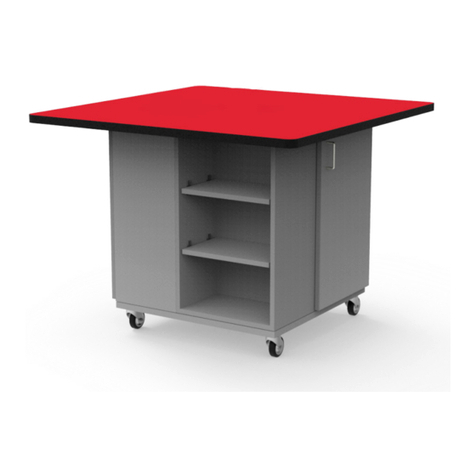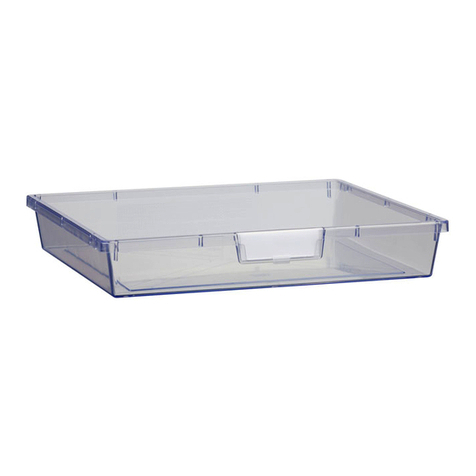
iXchange Wall System Continued
Care & Maintenance
507 E Grant Street, Thorp, WI 54771
P: 800.242.2303 F: 715.669.5929
5
V030112
www.wibenchmfg.com
STORAGE CABINET SURFACES
Daily Care and Cleaning for Laminate Surfaces
The laminate surface may be cleaned with warm water and
mild soaps, such as those used for hands or dishes. Heavy
solvents can aect edging adhesion.
Note, that while there are dierent grades and chemical
resistance properties to various types and manufacturers of
plastic laminate, the cleaning recommendations are universal.
To clean the surface, use a damp cloth or sponge and a mild
soap or detergent. Dicult stains such as coee or tea can be
removed using a mild household cleaner and baking soda;
mixing to achieve a paste consistency. Use a sti nylon bristle
brush, scrubbing (approx. 15-20 strokes) the aected area.
Do not scrub so as to damage or scratch the surface nish.
Doing so will void the warranty.
Stubborn stains that resist any of the above cleaning methods
may require the use of undiluted household bleach or nail
polish remover. Use a cotton ball saturated with bleach or nail
polish remover (acetone); gently rub the stain for up to two
minutes. Rinse thoroughly with warm water and wipe dry using
a soft cloth. This step may be repeated if the stain appears to
be going away and the color of the laminate has not
been aected.
WARNING: Prolonged exposure of the laminate surface
to bleach will cause discoloration. Always rinse laminate
surfaces after cleaning! Failure to rinse after cleaning can
cause damage; even if a small amount of cleaning solution
remains on the surface. A dry residue may be invisible; however,
moisture from cups or drinks can reactivate it, and result in
permanently etched scars or stains over time.
Recommended Household Cleaners:
• Clorox®(Prolongedexposurecanmarthesurface)
• Formula409®
• Dawn®
• GlassPlus®
• DowBathroomCleanerwithScrubbingBubbles™
• Fantastik®
• Favor®
• Windex
• Lestoil®
• Pledge®
• GreaseRelief®
• Mr.Clean®
• Lysol®BrandDisinfectantBasin/Tub/TileCleaner
• TOPJOB®
A Few Notes of Caution:
Acidic or abrasive cleaners can damage laminate surfaces;
do not use them. Drain cleaners containing lye will permanently
damage the laminate surface. If you spill a drain cleaner, wipe it
up immediately and rinse several times with water.
Hair, textile and food dyes can cause permanent stains. If dye
should happen to spill, wipe it up immediately with dishwashing
detergent or an all-purpose cleaner.
• Wipespillsawaypromptlyandrinseseveraltimeswithwater.
• Rustremoverscontainharshchemicals,whichwillquickly
cause permanent damage. If a spill occurs, wipe o residue
immediately and wash thoroughly with soapy water and rinse
several times.
• Steelwoolandotherabrasivepadswilldamagethelaminate
face. Do not use them for cleaning and don’t store steel wool
pads on your countertop; the metal can rust and leave stains.
• Toiletbowlcleanerscontainharshchemicalsthatcancause
permanent damage.
• Ifspillsoccur,wipeupimmediately,washsurfacewithsoapy
water and rinse several times.
• Sharpobjectscandamagethesurface;marringitsbeauty
and lowering wear and stain resistance. Although high pressure
laminates are somewhat resistant to scratch and marring, the
surface can be damaged, even under normal use.
• Laminatesurfacesmayneedoccasionaldustingdepending
on where it’s used.
• Tokeepthesurfacebeautiful,useanon-oilyfurniturespray.
Furniture polish can also help hide ne scratches in the surface.
• Excessivecontactwithmoisture,highhumidityandotherharsh
environmental conditions may not aect the laminate surface
itself, but may cause the laminate surface to pull away from the
core material it is adhered to, causing failure.
• Althoughnotamaterialfailure,thisisconsideredaproduct
failure and may void the product warranty.
The cleaners listed below can cause damage to the surface of laminate:
Chemical Ingredient Synonymous Names
Hydrochloric Acid Muriatic Acid, Hydrogen Chloride
Sulfuric Acid OleicAcid,OilofVitriol,Oleum
Hydrouoric Acid Rust Remover
Phosphoric Acid Rust Remover
Sodium Hydroxide Caustic Soda, Caustic Lye, Soda Lye
